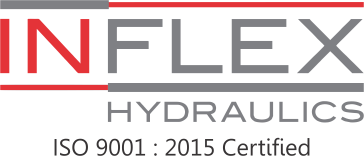Hydraulic tubing is a crucial component in fluid power systems, ensuring efficient and reliable hydraulic fluid transmission in various industries. From construction and agriculture to aerospace and manufacturing, hydraulic tubes play a vital role in modern engineering. As we step into 2025, the hydraulic tubing industry is experiencing a transformation driven by technological advancements, material innovations, and sustainability initiatives.
This comprehensive blog explores the future of hydraulic tubing, focusing on cutting-edge trends and developments that will shape the industry in 2025. We will delve into new materials, manufacturing techniques, smart technologies, sustainability efforts, and challenges facing the sector. Additionally, we will examine the opportunities emerging for manufacturers, engineers, and businesses seeking to optimize their hydraulic systems.
1. Current State of Hydraulic Tubing in 2025
Market Overview
The hydraulic tubing market is projected to reach USD 7.5 billion by 2033, growing at a CAGR of 4.2% from 2023 to 2033. The increasing demand for industrial machinery, mining equipment, and mobile hydraulic applications is driving this growth. Major industry players are focusing on enhanced product performance, efficiency, and sustainability to remain competitive in the evolving market.
Key Materials Used
- Steel Hydraulic Tubing: Offers high strength, durability, and resistance to extreme pressures, making it ideal for heavy-duty applications.
- Stainless Hydraulic Tubing: Known for its corrosion resistance, making it suitable for marine, chemical, and high-moisture environments.
- Composite and Alloy Tubing: Advanced alloys and composite materials are gaining traction for their lightweight properties and enhanced performance characteristics.
Applications Across Industries
Hydraulic tubes are extensively used in:
- Construction Machinery: Excavators, bulldozers, cranes
- Agricultural Equipment: Tractors, harvesters, irrigation systems
- Aerospace and Automotive: Landing gear, braking systems, power steering
- Oil & Gas: Offshore drilling rigs, hydraulic fracturing units
- Manufacturing and Industrial Automation: Robotics, CNC machinery
2. Innovations in Hydraulic Tubing Materials
Advanced Alloys and Composites
Material science advancements are leading to the development of high-performance hydraulic tubes. Manufacturers are exploring lightweight yet strong materials that enhance efficiency while reducing the overall weight of hydraulic systems.
Corrosion-Resistant Coatings
New anti-corrosion treatments and coatings are extending the lifespan of hydraulic tubing, especially in harsh environments like marine and industrial settings. This innovation ensures reduced maintenance costs and improved reliability.
High-Pressure and Temperature-Resistant Tubing
The demand for hydraulic tubes that can withstand extreme pressures and temperatures is increasing. Research and development in metallurgy and polymer sciences are paving the way for next-generation tubing solutions.
3. Manufacturing Process Advancements
Precision Tube Bending and Forming
Modern CNC-controlled bending machines and automated inspection systems are revolutionizing hydraulic tube manufacturing. These advancements result in higher precision, reduced material waste, and improved production efficiency.
3D Printing and Additive Manufacturing
Additive manufacturing is enabling the creation of complex hydraulic tube geometries that were previously impossible with traditional methods. This innovation allows for customized designs and rapid prototyping, leading to faster production cycles.
Automation and Robotics
Robotic welding and automated assembly lines are enhancing consistency, quality, and efficiency in hydraulic tube production. Automation reduces human error and increases scalability in manufacturing facilities.
4. Smart Hydraulic Systems Integration
Sensor-Embedded Tubing
The integration of sensors within hydraulic tubes enables real-time monitoring of pressure, temperature, and fluid flow. This smart technology allows for predictive maintenance, reducing downtime and improving system performance.
IoT and Data Analytics
The Internet of Things (IoT) is revolutionizing hydraulic systems by enabling remote monitoring and data analysis. Predictive analytics help identify potential failures before they occur, optimizing maintenance schedules and minimizing operational disruptions.
AI and Adaptive Control Systems
Artificial intelligence is being used to enhance hydraulic system efficiency by dynamically adjusting pressure and flow rates based on real-time data. These adaptive control systems improve energy efficiency and extend the lifespan of hydraulic components.
Recommended Reading: 8 Ways to Identify Early Signs of Hydraulic System Failure
5. Sustainability and Environmental Considerations
Eco-Friendly Materials
Manufacturers are increasingly adopting environmentally friendly materials, including recyclable alloys and biodegradable hydraulic fluids, to reduce the environmental impact of hydraulic systems.
Energy-Efficient Hydraulic Designs
New hydraulic system designs are focused on minimizing energy consumption by reducing pressure drops and optimizing fluid dynamics. These innovations contribute to lower operational costs and improved sustainability.
Regulatory Compliance and Green Initiatives
Stringent environmental regulations are driving the adoption of sustainable practices in hydraulic tubing manufacturing. Companies that prioritize eco-friendly solutions gain a competitive edge in the market.
6. Challenges Facing the Hydraulic Tubing Industry
Supply Chain Disruptions
Global supply chain challenges, including raw material shortages and transportation issues, impact the availability and pricing of hydraulic tubing components. Companies are investing in localized production and alternative supply chain strategies to mitigate these risks.
Adoption of New Technologies
While technological advancements offer numerous benefits, the adoption of new manufacturing processes and smart systems requires significant investment and workforce training. Overcoming these barriers is crucial for industry growth.
Market Competition
The hydraulic tubing industry is highly competitive, with new players entering the market. Companies must differentiate themselves through innovation, quality, and customer service to maintain a strong market presence.
7. Future Outlook and Opportunities
Emerging Markets and Industry Expansion
Developing regions are experiencing increased industrialization, creating new opportunities for hydraulic tubing manufacturers. Expanding into these markets can drive business growth and profitability.
Collaborative Research and Development
Partnerships between manufacturers, research institutions, and technology providers are accelerating innovation in hydraulic tubing. Collaborative efforts lead to breakthrough solutions that enhance performance and efficiency.
Customization and Flexibility in Design
The demand for customized hydraulic tubing solutions is on the rise. Manufacturers that offer tailored products to meet specific application requirements gain a competitive advantage in the industry.
Conclusion
The hydraulic tubing industry is evolving rapidly, with innovations in materials, manufacturing, and smart technologies shaping its future. As we move into 2025, businesses must stay ahead of industry trends and embrace advancements to remain competitive. Sustainability, efficiency, and adaptability will be key drivers of success in the hydraulic tubing sector.
By leveraging new technologies, adopting eco-friendly practices, and investing in research and development, companies can position themselves at the forefront of the industry. The future of hydraulic tubing is promising, and those who innovate will lead the way into a new era of fluid power solutions.



